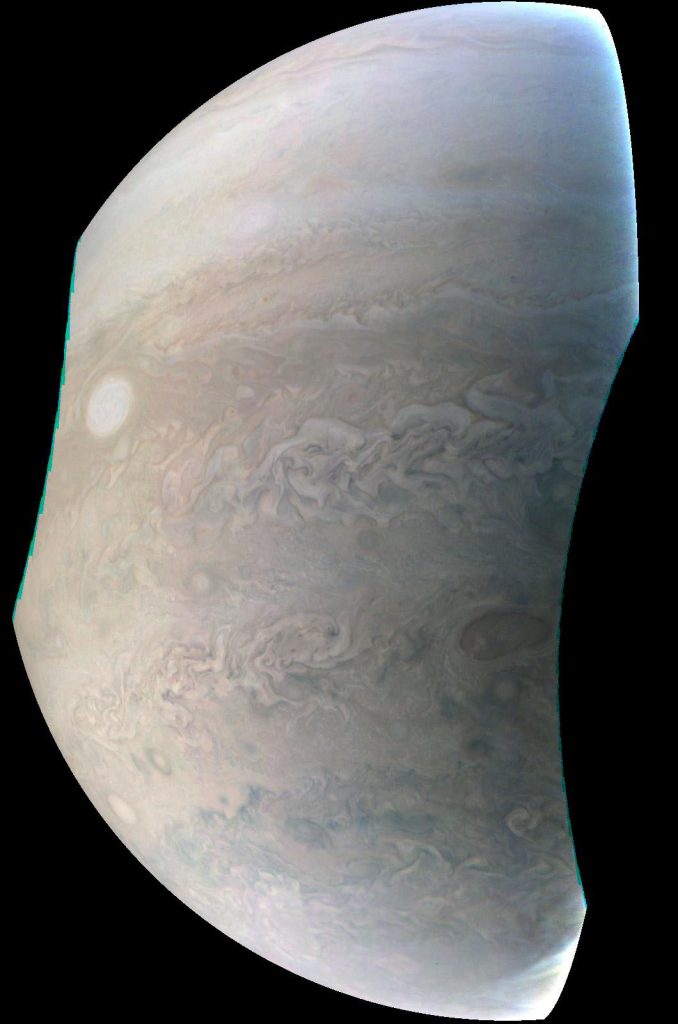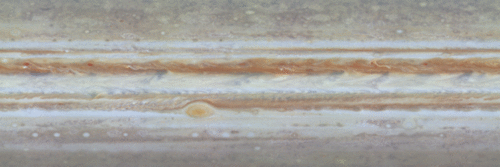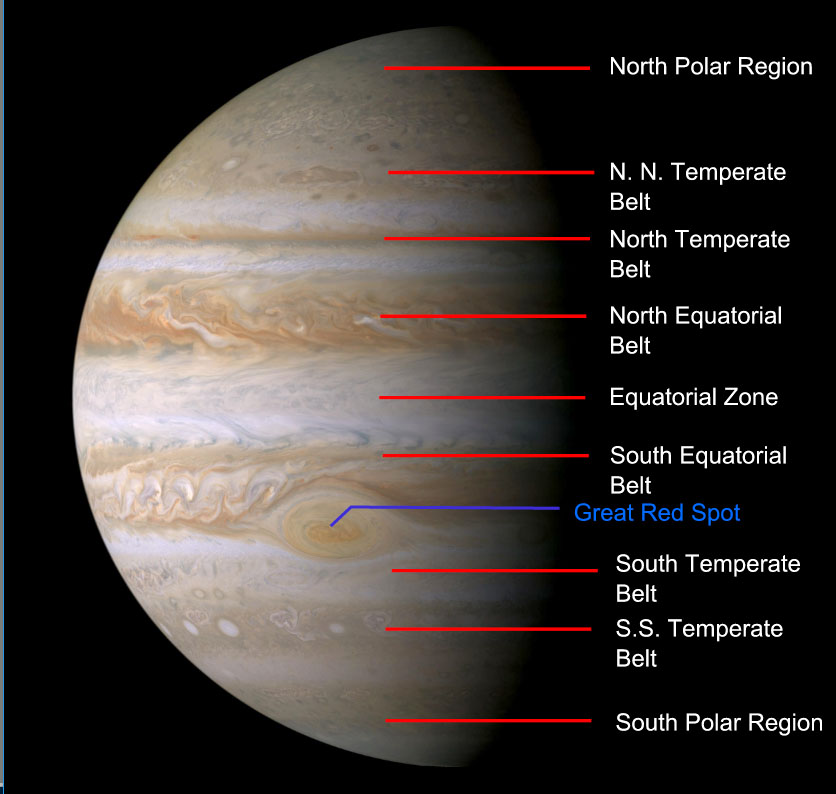
Astro-imager Damian Peach reprocessed one of the latest images taken by Juno's JunoCam during its 3rd close flyby of the planet on Dec. 11. The photo highlights one of the large 'pearls' (right) that forms a string of storms in Jupiter's atmosphere. A smaller isolated storm is seen at left. Credit: NASA/JPL-Caltech/SwRI/MSSS
Jupiter looks beautiful in pearls! This image, taken by the JunoCam imager on NASA's Juno spacecraft, highlights one of the eight massive storms that from a distance form a 'string of pearls' on Jupiter's turbulent atmosphere. They're counterclockwise rotating storms that appear as white ovals in the gas giant's southern hemisphere. The larger pearl in the photo above is roughly half the size of Earth. Since 1986, these white ovals have varied in number from six to nine with eight currently visible.

Four more 'pearls' photographed on Dec. 10, 2016 in the planet's South Temperate Belt below the Great Red Spot. The moon Ganymede is at left. The show up well in photos but require good seeing and at least and 8-inch telescope to see visually. Credit: Christopher Go
The photos were taken during Sunday's close flyby. At the time of closest approach — called perijove — Juno streaked about 2,580 miles (4,150 km) above the gas giant's roiling, psychedelic cloud tops traveling about 129,000 mph or nearly 60 km per second relative to the planet. Seven of Juno's eight science instruments collected data during the flyby. At the time the photos were taken, the spacecraft was about 15,300 miles (24,600 km) from the planet.

This is the original image sent by JunoCam on Dec. 11 and features the eighth in a string of large storms in the planet's southern hemisphere. Credit: NASA/JPL-Caltech/SwRI/MSSS
JunoCam is a color, visible-light camera designed to capture remarkable pictures of Jupiter's poles and cloud tops. As Juno's eyes, it will provide a wide view, helping to provide context for the spacecraft's other instruments. JunoCam was included on the spacecraft specifically for purposes of public engagement; although its images will be helpful to the science team, it is not considered one of the mission's science instruments.

4-frame animation spans 24 Jovian days, or about 10 Earth days. The passage of time is accelerated by a factor of 600,000. Some of the ovals are visible as well as a variety of jets - west to east and east to west. Credit: NASA
The crazy swirls of clouds we see in the photos are composed of ammonia ice crystals organized into a dozen or so bands parallel to the equator called belts (the darker ones) and zones. The border of each is bounded by a powerful wind flow called a jet, resembling Earth's jet streams, which alternate direction from one band to the next.
Zones are colder and mark latitudes where material is upwelling from below. Ammonia ice is thought to give the zones their lighter color. Belts in contrast indicate sinking material; their color is a bit mysterious and may be due to the presence of hydrocarbons — molecules that are made from hydrogen, carbon, and oxygen as well as exotic sulfur and phosphorus compounds.

Use this guide to help you better understand Jupiter's arrangement of belts and zones, many of which are visible in amateur telescopes. Credit: NASA/JPL/Wikipedia
The pearls or storms form in windy Jovian atmosphere and can last many decades. Some eventually dissipate while others merge to form even larger storms. Unlike hurricanes, which fall apart when they blow inland from the ocean, there's no "land" on Jupiter, so storms that get started there just keep on going. The biggest, the Great Red Spot, has been hanging around causing trouble and delight (for telescopic observers) for at least 350 years.
Juno's next perijove pass will happen on Feb. 2, 2017.









No comments:
Post a Comment